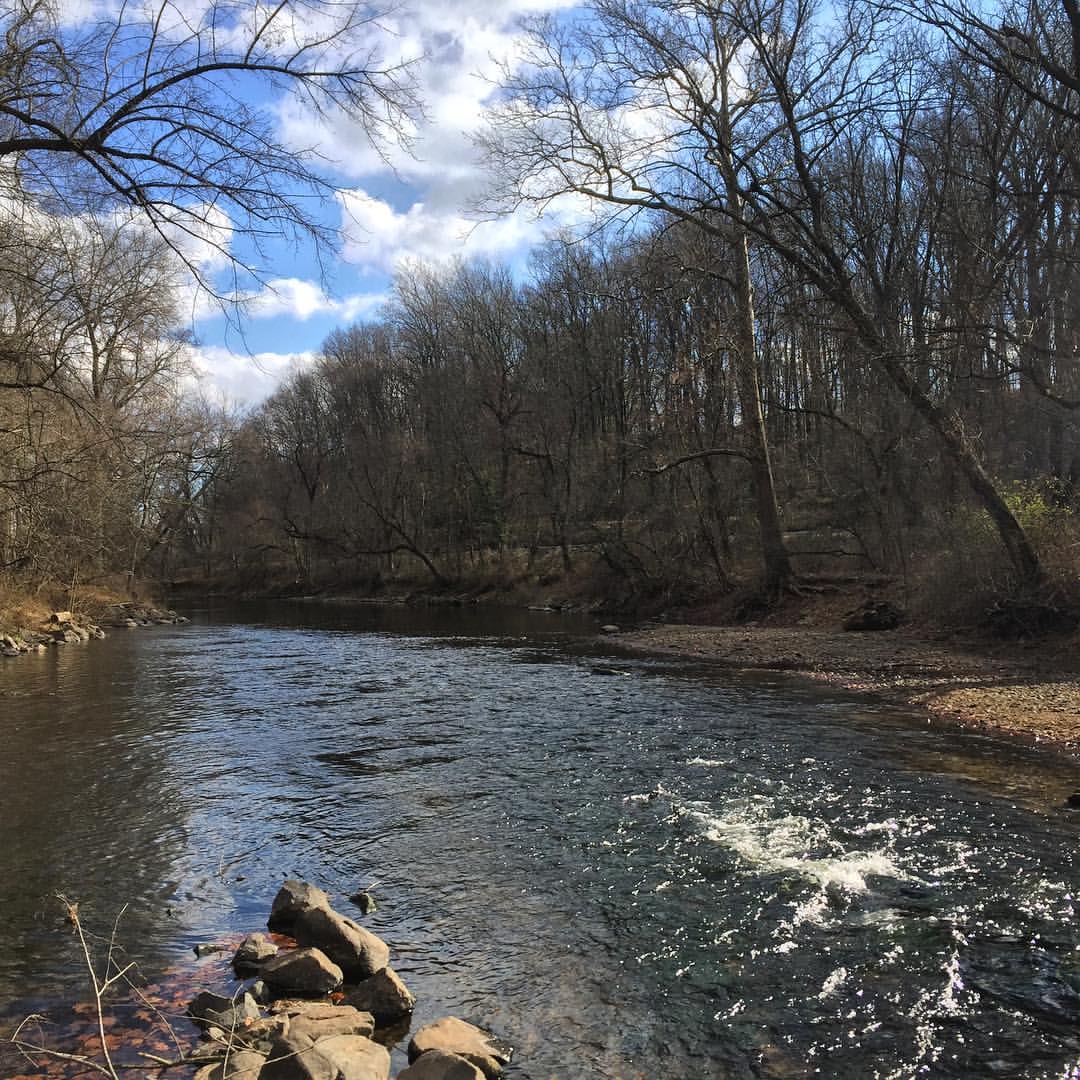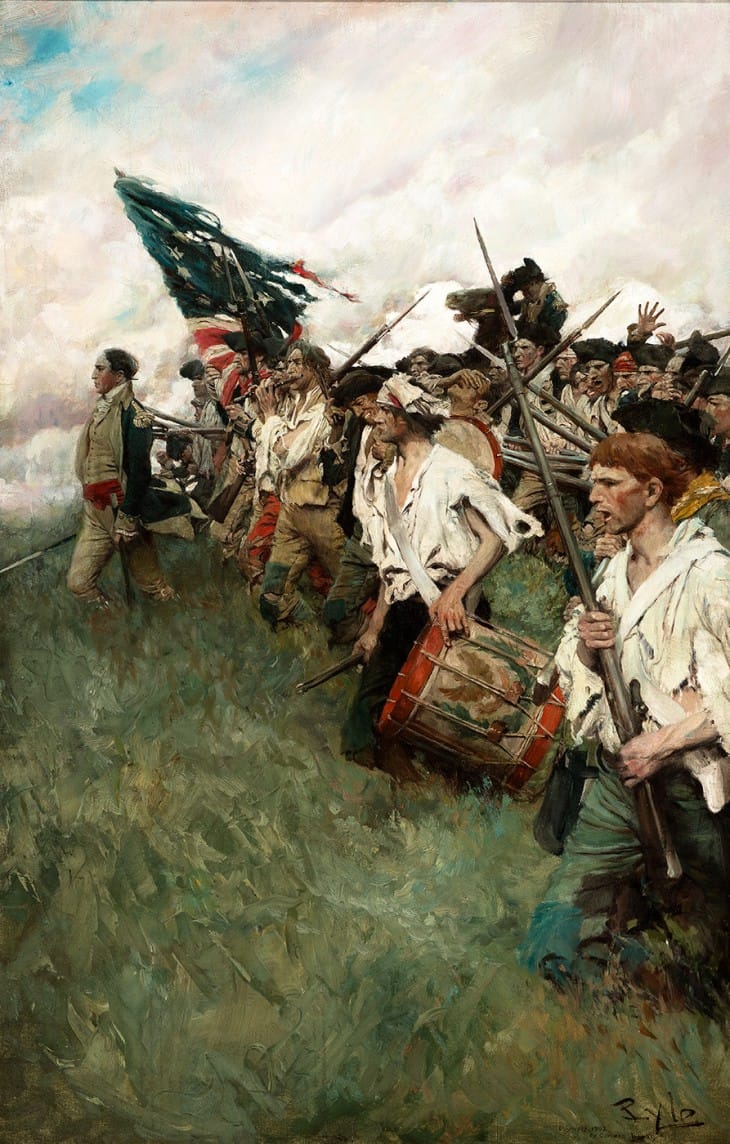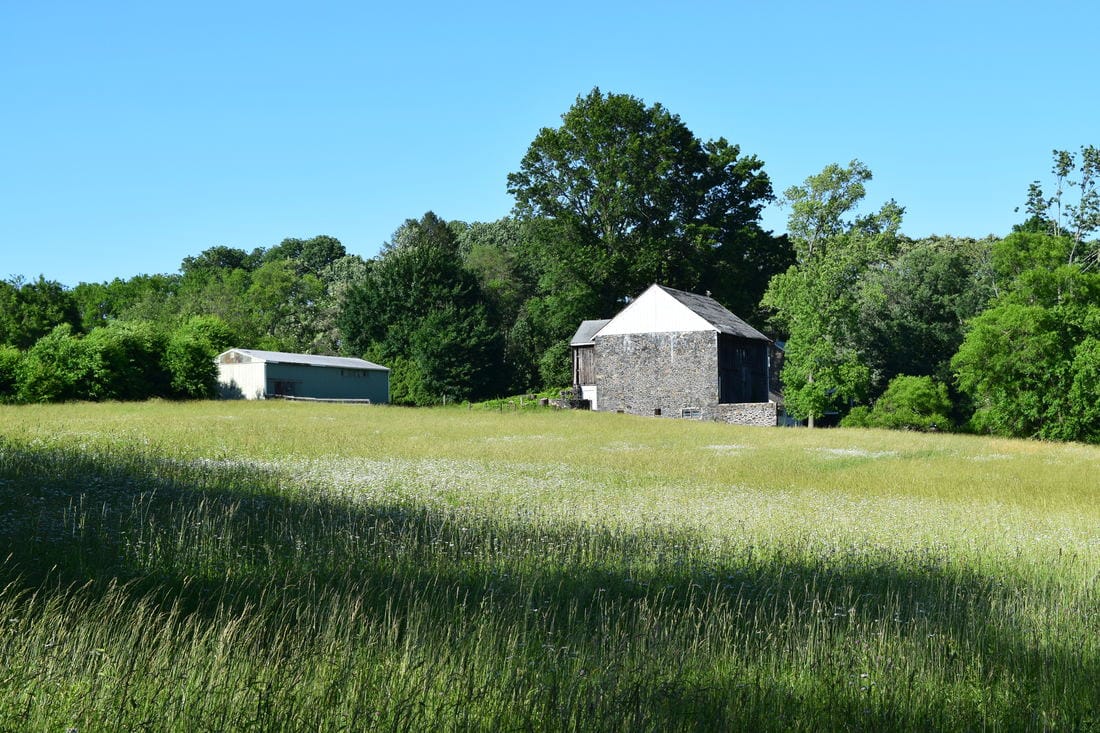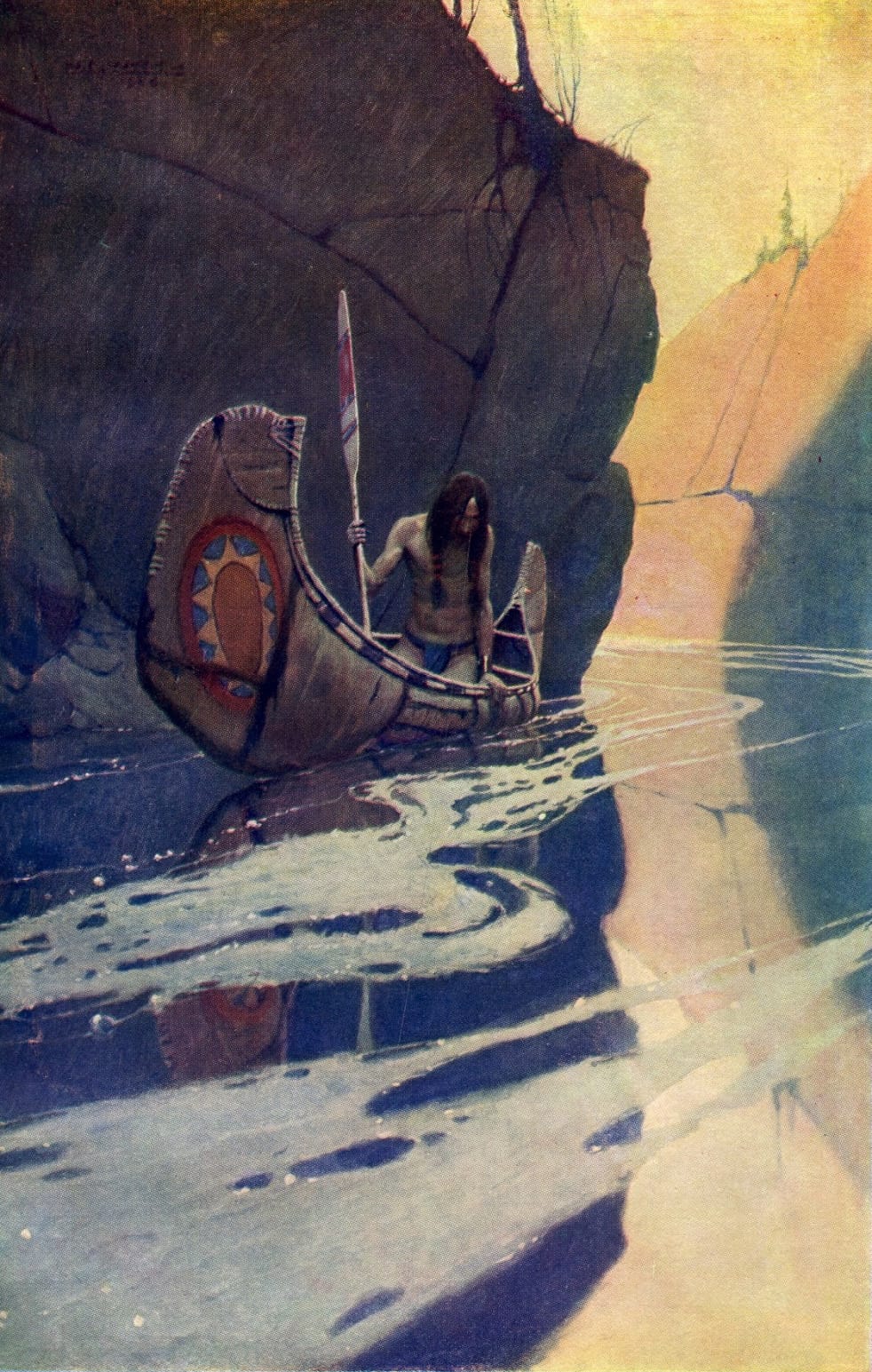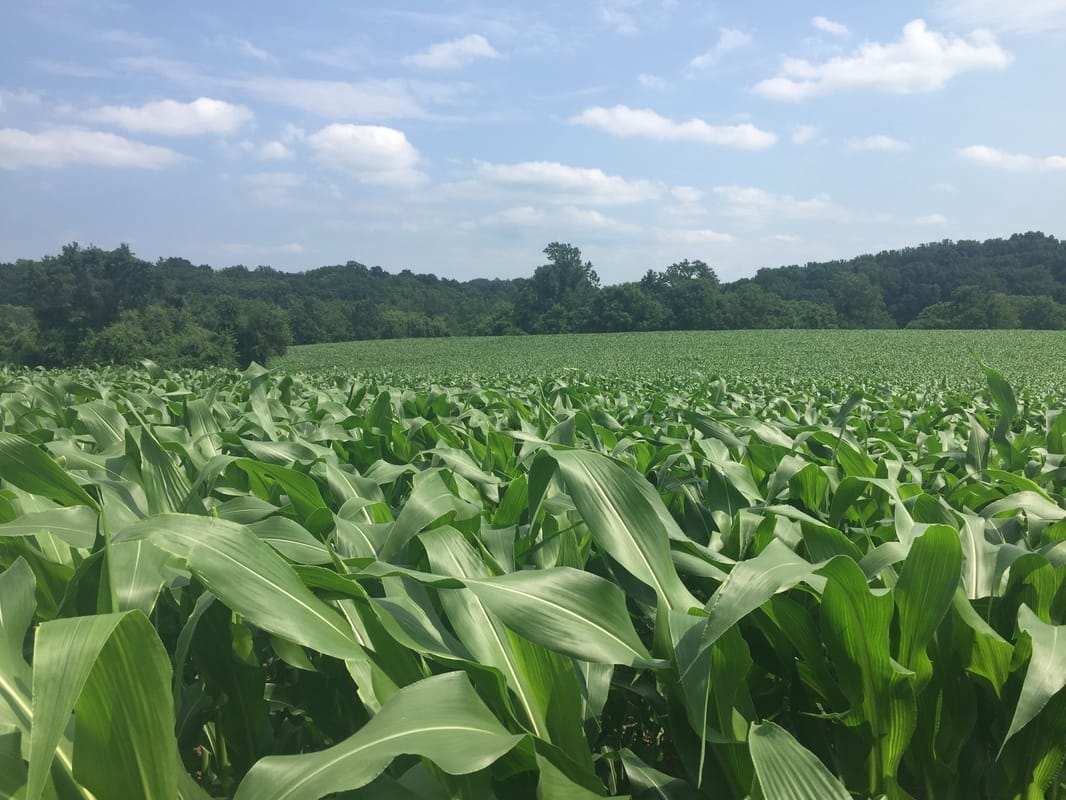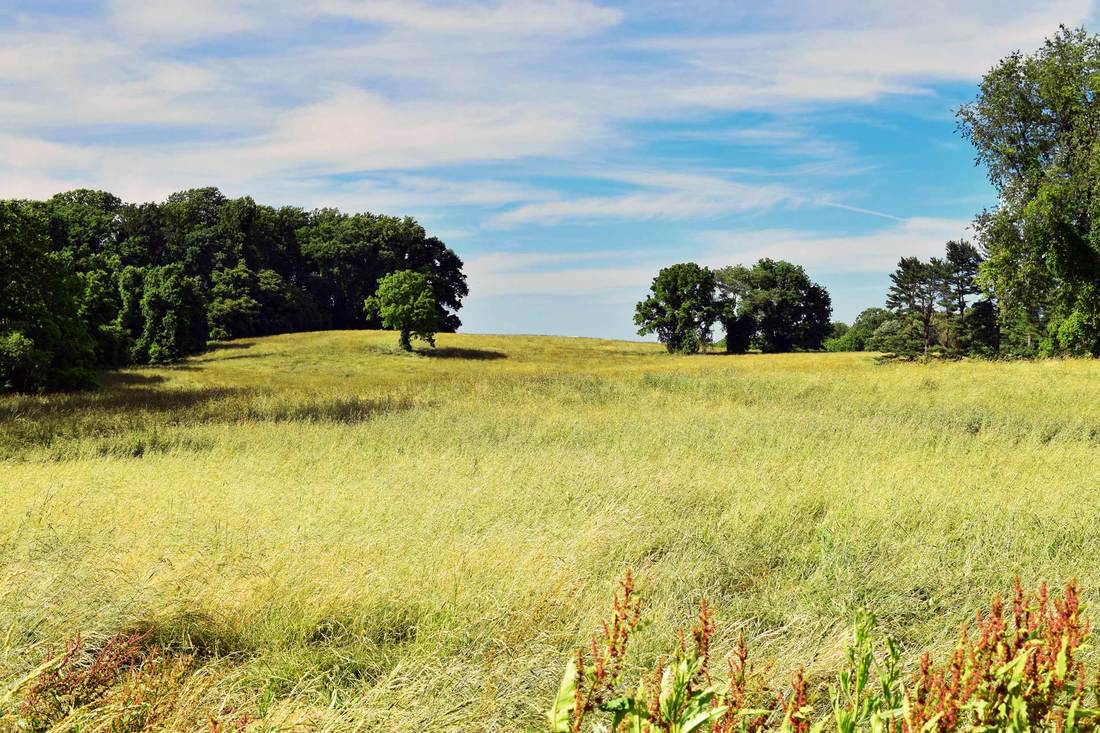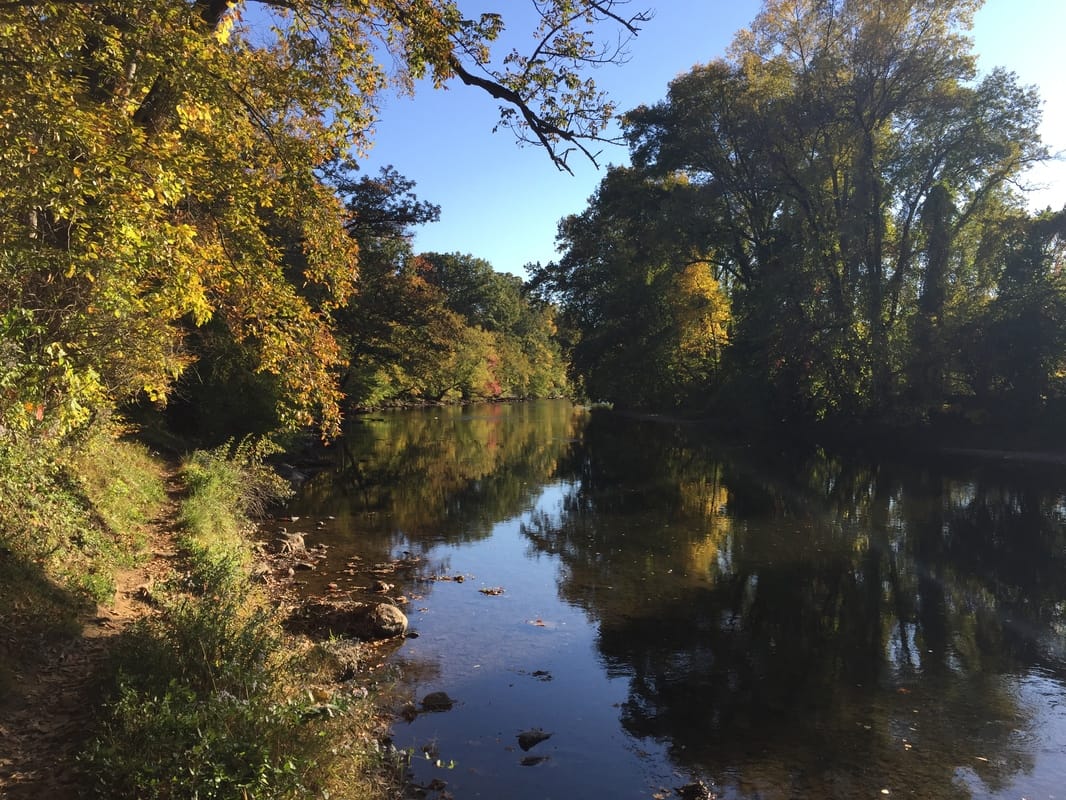UNLOCKING THE POTENTIAL OF PLACE
IN THE BRANDYWINE RIVER VALLEY
|
In Spring of 2016 I had the opportunity to take a short course at Schumacher College on bioregionalism and the story of place with Pamela Mang and Joel Glanzberg of Regenesis Group, as well as writer John Thackara and locals from South Devon, England. This project has been for me a revelatory experience of rediscovering my home in the Brandywine River Valley after returning from abroad with a new perspective on place and our role in its future. As a personal inquiry, it draws from my lifelong relationship to the area but is of course limited to my own perception and experience. Incorporating intersecting threads from the new economy movement, cosmology, and historical ecology that I have been exploring over the past two years, my hope is that this offers an invitation for deeper dialogue into our shared membership and collective role in the places we inhabit. —Mark Phillips
When I tell people I’m from Chadds Ford, Pennsylvania, they are often already familiar with the area through its relationship with the Wyeth family of artists. Andrew Wyeth is perhaps the most notable of the painters, but before him came his father N.C., the great American illustrator of works like Treasure Island and Robinson Crusoe, and after him his son Jamie, who continues to inhabit and paint on the same land his father and grandfather did here in the area. The rest of N.C.’s family, though often seated in the shadows of Andrew’s spotlight, developed remarkable skill-sets as well. Henriette and Carolyn were also exceptionally talented painters, Ann a composer, and Nathaniel the inventor responsible for polyethylene terephthalate, or PET, the plastic widely used in drink bottles today. A major allure of the Wyeth’s artwork is its remarkable commitment to place — while N.C.’s illustrations required him to source his material from another place or culture, the natural beauty and cultural legacy of the Chadds Ford area clearly inspired him and nourished his artistic spirit. Andrew went well beyond this, painting almost exclusively the land and people of his home in Chadds Ford and in Maine, where the family would typically spend the summer season. And while the oeuvre of Andrew’s son Jamie includes time spent with Andy Warhol in New York and travels to Europe for study, his work is nonetheless rooted in Chadds Ford and Maine. |
|
The Brandywine River in Winter. Photo: Mark Phillips
|
My geographic affiliation with the Wyeths has always been a source of pride when revealing my home to others, and it continues to grow as I learn more about this place. And yet it is unlikely that I would ever have enjoyed this association if Howard Pyle, illustrator, author, and mentor to N.C., had not moved to Wilmington, Delaware, in 1900 to start his own art school. N.C. moved here from his home in Needham, Massachusetts, in 1902 and within a couple of years had established himself as one of Pyle’s most promising pupils. Students spent time between Wilmington and Chadds Ford, just twelve miles distant, and the area’s lush agricultural landscape and cultural heritage provided a rich environment for developing as young, impressionable artists.
Most notably, the location was (and is) known for its direct connection to the American Revolutionary War that had occurred some 125 years prior to the establishment of the Howard Pyle school, but which nonetheless remained embedded in the cultural ethos of the place. On September 11, 1777, American and British soldiers converged along the banks of the Brandywine River in the longest single day battle of the war. The Battle of Brandywine occurred up and down the river, whose fording places determined specific points of contact between the two armies. The river’s location actually influenced the convergence of forces, for it was here that both armies could cross the river en route to the city of Philadelphia. The battle was one of the worst American losses of the Revolutionary War, the American defeat leaving what was at that time the country’s capital vulnerable to its subsequent capture and occupation by British forces until June of 1778. It left a deep cultural impression on the people of the Brandywine Valley and, despite the loss, became a defining historical event in the area that would come to inspire the artwork of Howard Pyle and his students, and even the character of this place today. |
“…I was attracted more and more by the beautiful effects of nature, which were made very dramatic having been the identical fighting grounds on which was fought the Battle of Brandywine. I would sit for half an hour at a time in some beautiful poetic spot which bore the scars of an earthworks thrown up by the Americans or Redcoats, thinking of the wonderful contrast between the bedraggled, ragged, bloodstained soldiers of Washington, and the clear, pure, cheerful babbling brook…”
|
|
Image above:
Nation Makers, Howard Pyle, 1906 |
Growing up in Chadds Ford, I was connected to people and events that had changed the world simply by living on the same land, in the same place. In one poignant memory, I recall learning that my neighbors uncovered revolutionary war era artifacts when digging out the pool in which we spent so many summer days. The events were impossibly distant, but that anecdote connected me to their reality in perhaps the way Howard Pyle’s illustrations of the events would have for others in his time. As a child I would fish the Brandywine together with my father near the original fording place, just five minutes down the road from our home at the time. The Brandywine River Museum of Art that houses much of the Wyeth body of art was visible downriver from the banks where we would cast our lines. Across the street was Hanks Place, the local diner my dad would take each of his three children to before school in the morning as a family tradition. And there on occasion, when my dad took my eldest sister some ten years before me, there would be Mr. Andrew Wyeth at the counter with his breakfast, left to himself for the local he was.
While I never had the opportunity I always dreamed of, to sit with Andrew at the counter and talk over coffee, I am nevertheless fortunate in that I may also call the Brandywine Valley home. These rolling agricultural fields and forests, shaded brooks, and winding back roads are as characteristic of this relationship as the creative output of the artists they inspired. My deepest memories are stored in the landscape of this place, whose woodlands and waterways entertained me in my childhood without asking for anything in return. I remember the summer taste of honeysuckle from our yard and wineberries from the hedgerow, and the fallen leaves of Autumn that layered the ground with crunchy droppings from our red maple, birch, and oak trees. Looking out at the hills reminds me of that winter morning joy of snow freshly fallen and the hope that school might be cancelled so we could spend the day sledding. And when Spring comes I am greeted again by the fragrance of this place and the annual process of rebirth that always accompanied me, without pause or expectation, throughout my development into the person I am today. |
|
Image above:
Local architecture in the Brandywine Valley. Photo: Mark Phillips |
These and other memories of the land and its seasons are integral with the cultural heritage of the Wyeth family and the Battle of Brandywine, and together they add depth and meaning to my personal identity. And while these experiences have nourished my imagination and sense of self, I’ve now begun to learn the deep history of this place and the people it sustained before those events that led up to the Revolutionary War. This is a history distinct from the American cultural narrative I grew up with, and even the landscape of fields and forests that Andrew painted and which makes me long for home after time away. It’s a history that goes back beyond the early Quaker settlers who came here from Europe, and even before the Native Americans who inhabited this region for generations prior. The story of this place includes this history, of course, but is ultimately sourced in the evolutionary development of this land over the millions of years leading up to its present day form.
As far as I can tell from a layman’s understanding of geology, the Brandywine Valley’s initial formation can be traced back to a series of tectonic collisions that occurred between 250 and 460 million years ago. These planetary scale events, including the joining of present day North America with Africa that helped form the Appalachian mountains, provided the geological foundation for this region of the continent. The last major events that helped define our region’s watersheds were a series of geological uplifts that culminated some 15 million years ago, which would have enhanced the flow of rivers and streams throughout the area. The shape and composition of bedrock would then inform the evolution of the entire ecosystem over the millennia to follow. Here, on the same land we inhabit today, flora and fauna unique to this region developed over millions of years. The climate changed, the watershed formed, and ecological succession occurred. Trees, grasses, mammals, insects, and myriad other life-forms now native to this region developed their long partnership with its soil, climate, and hydrology. And, ever so slowly, the waterway that I would some day come to know as “Brandywine” carved its identity through the landscape as gravity brought it out to sea. While rivers wend and wind their way through the landscape and can often change course through time, the Brandywine Valley had likely formed its unique geological identity by the time the first humans arrived to the North American continent between 16,500 and 13,000 years ago. Over thousands of years, these original American immigrants branched out into the many Native American tribes that would come to inhabit particular bioregions throughout the continent. The people that eventually came to settle in this place called themselves the Lenni-Lenape, or “original man,” and inhabited the Delaware River watershed and lower Hudson Valley. If my knowledge of the Lenape people is still growing as I trace these threads into the past, it’s already exceeded the complacent, happy-go-lucky picture I received of them in my early childhood. As far as I can remember, the early Native Americans wore loincloths, lived in tipis, and lived off their cultivation of the three sisters: corn, beans, and squash. Though I surely learned more details, it was likely lost to a culture that trivializes the long, multi-generational presence of Native Americans on this landscape well before European colonization (our high school mascot, for example, is the Unionville Indian). As I develop my relationship with the Brandywine Valley, I find that the people who inhabited this land before us experienced it in an entirely different way than I or anyone else coming over here from Europe would have. |
|
The Indian in His Solitude, N.C. Wyeth, Illustration for Outing Magazine, 1907
|
For the Lenape people, the land of this region was not only their source of physical nourishment, but also spiritual fulfillment. The Delaware watershed was the primary context for the formation of a cosmology that fostered an intimate relationship with the more-than-human world; the Lenape perceived the significance of their interdependence with other life forms and expressed gratitude to nature for food, clothing, and shelter derived from their immediate environment. This perception of nature as sacred contributed to a relationship with the natural world more akin to partnership, rather than the paradigm of domination, objectification, and exploitation brought to the continent by Europeans in the 16th Century.
We can get a sense of the physical manifestations that such a relationship would have yielded from research done in the areas of indigenous land practices. Kat Anderson, in her book Tending the Wild: Native American Knowledge and the Management of California’s Natural Resources, reveals how Californian indigenous peoples intentionally managed the land through practical knowledge gained over many generations. We have various clues that point in the same direction for the Lenape of the Delaware region. Controlled burning, for example, is known to have regularly taken place as a multi-functional solution, clearing thick undergrowth of flora to allow for hunting, agriculture, and ease of inhabitation. One account of European settlers arriving to the area details their ability to drive a four horse carriage through the forest, likely made possible through careful forest management by local indigenous communities. Activities like this were undertaken as natural stewardship to enhance the health of the ecosystem as a whole, humans included. And stewardship of ecosystems at the community level would have ultimately yielded sustainability at the bioregional scale of the Delaware river watershed. |
|
Controlled burnings would have made thick understory like this along the banks of the Brandywine River easier to inhabit for the Leni Lenape. Photo: Mark Phillips
|
In this way, Native Americans lived a mutually beneficial relationship with the land, deriving their well-being from the natural environment while at the same time contributing to its development. In other words, they gave back to the land that gave everything to them, living as co-participants of an evolving ecosystem. If there has ever been an example of what ecological sustainability actually looks like, the indigenous inhabitants of this land (and in many other places around the world today) were on to something. And well before Small is Beautiful, such communities embodied E.F. Schumacher’s ideal economic vision of local production for local consumption. The management of goods and services occurred within the limits of its ecological context because human communities were established in reciprocity with the natural world and rooted in place.
And so, when Europeans first arrived here, both as agents of political-economic empire and immigrants in search of better lives, the Lenape and other tribes couldn’t have foreseen the future consequence of a new economy built on the alien concept of land ownership and resource extraction. Here in the Brandywine Valley, the river was quickly identified as a powerful source of natural capital and experienced the installation of water-powered machinery up and down its banks. What had once provided habitat to the thriving shad populations that helped sustain the Lenape now supported the development of agriculture and commerce for colonists. Through the coming years, the Lenape population fell from an estimated 20,000 to 10,000 in 1600 to only 2,000 in 1682, severely affected by new diseases and wars with local tribes over the rights to trade fur with the Europeans. Thus, the land and life-forms that had for generations sustained their collective body and soul now became a source of their own displacement, as American colonies gradually established themselves and their economy along the eastern seaboard of the continent. Over the coming centuries, native forest lush with biodiversity was gradually terraformed through industrial economic growth into the American agricultural countryside we know today. As a child, we received this ecological and cultural history not through the lens of the people who truly inhabited this place before these events, but through those that displaced them. At some point in my education I learned that Pennsylvania received its namesake from William Penn after Charles II granted him a charter for the land in 1680. Pennsylvania or Penn’s Woods, was named for the vast stands of forest that predominated this landscape and which would be razed to the ground in the name of political-economic progress. What stands out to me is not only the desecration of this act to natives, but also how I received it as nothing particularly significant as a young, white American child. Through the lens of the American educational system, continental scale acts of violence against humans and nature were normalized and reduced to classroom curiosity. |
|
The neighboring Susquehanna River around 1890 being used to store hundreds of thousands of logs before processing at local sawmills. Photo: Pennsylvania State Archives
|
Today the events set into motion some 500 years ago with the arrival of Columbus to the Americas are ongoing, albeit in more subtle ways. While having replaced long established, native forest ecosystems, the agricultural landscape that nonetheless characterizes this place for me and many others is now being succeeded by a different form of monoculture.
Neighborhoods of McMansions — bulky, generic homes lacking architectural terroir — increasingly replace the rolling fields that Andrew and others iconicized in their artwork throughout the years. The diversity of Main Street, so representative of local culture and commerce, is increasingly subject to a kind of sterilization through the spread of those same finance-fueled corporate invasives found throughout the country. And where small businesses once recirculated wealth at the community level by virtue of locally based ownership, now these dollars evaporate into the all-consuming vortex of the financial machine that drives our global economy. In the Brandywine Valley it appears that we are faced with a new wave of development that stands to disaggregate our beloved landscape into parcels of economic value. But, perhaps more accurately, it’s the same wave that my parents participated in when they moved to Chadds Ford from Hackensack, New Jersey, in the 1980s. Whether we want to acknowledge it or not, we are members of the same story of change that has taken place over the past few centuries. The residential and commercial growth that we currently experience in the Brandywine Valley is really just the local, contemporary manifestation of a global economic paradigm based on financial extraction and the commodification of nature. Now those same forces that converted this landscape into capital and displaced the Lenape threaten to repeat the process all over again in the same place, albeit to different inhabitants. |
|
Modern agriculture in the Brandywine Valley. Photo: Mark Phillips
|
Maybe this is a small taste of what it felt like for the Lenape: unstoppable, sprawling forces reducing our dearest and most intimate spaces on the planet to a global sameness, from commons to commodity, and community to corporations. To be fair, economic growth does have its benefits. Locally, we are the benefactors of the great wealth accumulated throughout the centuries of human labor and natural resource extraction that have occurred here and around the world. Most notably, we are the birthplace of global chemical developer and manufacturer Dupont, whose founder Éleuthère Irénée du Pont de Nemours established his gunpowder mills along the banks of the Brandywine in 1802.
While the DuPonts have, for whatever reason, played a less direct role in my perception of place here in the Brandywine Valley, it is difficult to overstate the impact of their familial and monetary legacy on the area. Several estates have been turned into public destinations of major cultural significance, including the world renown horticultural display gardens of Longwood Gardens and the Winterthur Museum, Garden, and Library, home to an extensive collection of American cultural artifacts. It was also through DuPont that Nathaniel Wyeth developed his inventions and sourced his livelihood, just as many others in the area do today (including my mother, who spent a number of years working at Longwood Gardens to support our family). And yet it is remarkable to think that the ultimate origin of this untold wealth is the humble Brandywine River and the steady flow that enabled the milling process required for the production and sale of DuPont’s gunpowder. Indeed, the vast timeline of events that have occurred in the Brandywine Valley have been largely determined by the long and continued geological development of the river and its watershed: the settlement of the Lenape and later the Europeans, the location of the famous battle, and the artwork of the Wyeths, to name just a few. In returning to the source of things, we are reminded that all value, economic or otherwise, is ultimately derived from the Earth that sustains us. Everything else is subsidiary to the well-being of our planet as a whole. This is the relevance of learning the story of this place and those indigenous cultures that inhabited the land before us: that we might reimagine (or perhaps remember) what the cultural-historian Thomas Berry referred to as a mutually-enhancing presence between humans and the Earth. In telling the story of place, we reorient ourselves as participants within the ancient evolutionary process that contextualizes the land we live on and its deep, multi-faceted cultural heritage. When we hold this story in our hearts as a totality, a single, seamless whole that includes the baggage of colonialism, American slavery, and ecosystem destruction, we tap into a deep potential for the possibility of our places and the future promise they hold for us. |
|
Chadds Ford, Pennsylvania. Photo: Mark Phillips
|
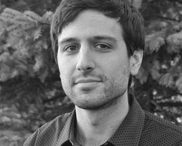
In returning home I can explore in practical terms what it might look like to live here in a way that contributes to the well-being of the life around me. Namely, what is the highest state of health that could be achieved again for the Brandywine Valley, and how can it be attained by the people who live here? The practical response to this question is, essentially, a process of building community around our places — what makes them unique, authentic, and worthy of our collective pride, and how can we maximize the vitality of these qualities? Perhaps ironically, unlocking the potential of this place is in the hands of its human inhabitants, because culture, land, and the economy co-exist together as one interdependent process. Thus, reimagining our presence on the Earth also requires that we reimagine our relationship to each other. Because if the political-economic forces of these past centuries have unraveled our ecosystems, they have also dissolved the conditions that enable human communities to thrive. With this in mind, our vision for an economy in service to life must not only include a new relationship with nature, but also a new attention to the potential of empowered communities to care for themselves and their places. The revitalization of a watershed like the Brandywine Valley therefore also involves the conscious restoration of economic democracy and a reconsideration of what liberty and justice for all actually looks like in our daily lives — from the ownership and stewardship of land to the creation and circulation of wealth. Moving forward, the future of our home can be constructed with new emphasis on the value of this cultural legacy and our own capacity for its regeneration in partnership with the landscape we inhabit. Ultimately, the beauty of this work is that in collectively engaging in this process around the world, we can look to the needs of the entire planet at the same time that we take care of ourselves and each other. Mark Phillips is currently exploring new cosmology and the work of Thomas Berry at Genesis Farm, an ecological learning center and community supported garden in Blairstown, NJ. You can learn more about his work and writing through his personal blog at www.markjphillips.com |
|
Autumn on the Brandywine. Photo: Mark Phillips
|
Please share your comments on
|
